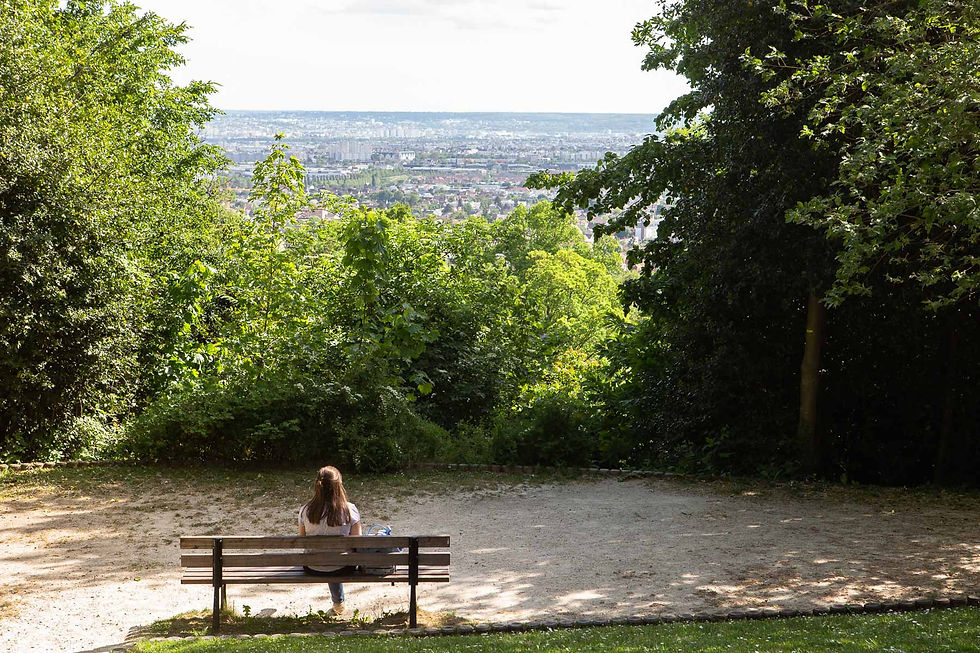Running in Val Parisis : between Seine and forests
- audreyubertino
- Jun 30, 2022
- 3 min read
The Val Parisis agglomeration community includes fifteen municipalities in the Val d'Oise, only a few kilometers from Paris. Val Parisis has many tourist assets due to its landscapes, its heritage and its geographical location. Its natural areas also provide a privileged setting for all aficionados of walks and hikes, whether on foot or by bicycle.

Stretching over an area from the banks of the Seine to the Montmorency forest, the Val Parisis Agglomeration Community has set itself the mission of developing and enhancing its territory and its tourism offer. Since its creation in 2016, the Community has already taken several initiatives in this direction and many projects are underway to strengthen the attractiveness of the territory.
Birthplace of the Val d'Oise
In recent decades, several archaeological excavation campaigns have uncovered numerous ancient remains in the communes of Val Parisis. A neolithic necropolis (4750-4400 B.C.) was discovered in Cormeilles-en-Parisis, attesting to the presence of humans in the region since prehistoric times. Remains dating from Antiquity and the Middle Ages have also been exhumed and are still visible today. You will be able to cross some of them during your walk which will lead you, among other things, along the Chaussée Jules César.

The Gallic period was marked by a remarkable people: the Parisii. They lived in the current Paris region and took part in the resistance movement against Caesar alongside Vercingetorix, in 52 BC. Their name would perhaps come from the Gallic kwarisi and is at the origin of the name of the city of Paris and the whole region of Parisis.
Architectural and cultural heritage
The communes of the agglomeration have a varied built heritage, ranging from small castles to Gothic churches. The city with the most rich heritage is without a doubt Eaubonne, once known as "the city of fifteen castles". During your walk, don't miss the Château de la Chesnaie or the Petit Château, work of the famous architect Claude Nicolas Ledoux. The city also stands out because it is the only one in the agglomeration community to have three churches of different periods and styles. Don't miss the Saint-Martin d'Herblay-sur-Seine church which is one of the oldest in the area and offers a magnificent view of the Seine.

The banks of the river have inspired many impressionist artists, such as Pissaro, Cézanne or Marquet, since the 19th century. Your walk will take you on the impressionists' route in La Frette-sur-Seine which invites you to discover the most beautiful works of the artists who set up their easel in the town, thanks to explanatory panels and reproductions of 19 master paintings.
The landscapes of the banks of the Seine are not the only ones to have attracted artists. Many painters also came to the area to paint the famous mills of Sannois. In the 18th century, three mills stood on the Mont Trouillet. Today, there is only one left, which you can admire during your bike ride.
Green and blue heritage

If Val Parisis has a rich cultural heritage, it is also a green setting, ideal for walkers and hikers. Whether you are on foot or by bike, alone or with others, you are bound to find something to do among the natural spaces, parks and forests of the region. Your walk along the Seine will lead you to the Buttes du Parisis, through the Schlumberger park which offers splendid views of the Parisian agglomeration.
For the more athletic, bicycle paths have been built or are being built along the Seine, as part of the Seine à vélo, a bicycle route linking Paris to Le Havre and Deauville by following the meanders of the river.
Val Parisis is also a land of vineyards and mineral waters. Vineyards were indeed present in certain communes for several centuries, as for example in Sannois or Ermont. Although this viticulture has now practically disappeared, it is still present in the names of certain places (Vignolles, Bonnes Vignes...) or in the coats of arms of certain communes. Some towns have even replanted small vineyards in order to maintain this wine tradition. As for mineral water, it comes from the numerous springs that crisscross the region. Several bottling companies existed in the 19th and 20th centuries.
Find all the routes of the Val Parisis agglomeration community on the JOOKS application.
Run, walk or cycle with JOOKS, from the Sannois mill to the Château de la Chesnaie!



Comments